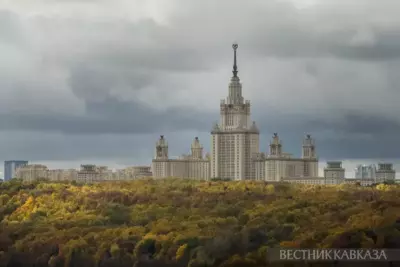David Stepanyan, Yerevan, exclusively to VK
Despite optimistic statements by the Armenian authorities that the economy is coming out of a state of free fall, for five years in a row the country has been suffering economic decline. According to the World Bank, in 2008-2012 alone, the absolute decline in GDP was 15.1%, from $11.662 billion to $9.91 billion. The decline in the Armenian economy comes amid the growing economies of neighboring countries. However, the authorities prefer to keep these data hushed up, pointing to the 7 percent growth in 2012. However, this "growth" of the economy was accompanied by the growth of GDP only from 3.8 trillion drams in 2011 to 3.9 trillion drams in 2012. Thus, even a non-specialist understands that in reality, the authorities for the past 5 years have reduced the volume of the economy. The notorious "growth" only exists in the statements of the National Statistical Service.
The real state of affairs is reflected by the indicator of the level of foreign investment, especially FDI. Even according to the National Statistical Service, the total amount of foreign investment in the real sector of the economy in January-March 2013 decreased by 11.9% to 131 million dollars. Direst foreign investment in the real sector of the economy during the same period amounted to 57.7 million dollars, a decrease of 35.4%. However, the head of the parliamentary Committee on Financial-Credit and Budgetary Affairs, Republican Gagik Minasyan, is inclined to explain the decline in foreign investment by international trends, uncertainties and crises. He said that in today's world there is no country in which in 2013 investment growth would be observed. With all due respect to Minasyan, "Vestnik Kavkaza” was able to find at least three of these countries, and not in the world but among the countries of the CIS. In the first quarter of 2013, growth in foreign investment was recorded in Uzbekistan by 13.2%, in Ukraine by 76%, and in Belarus by 18.2%.
As for Armenia, the outflow of capital, which has not yet become a catastrophe according to unofficial figures, last year reached $700 million. The Armenian Statistical Service does not publish indicators of capital flight, publishing only its inflow. And the outflow of funds is quite understandable, since investing excess capital in an economy devoid of growth in the consumer market and having the highest rate of all possible monopolizations is not that attractive. All this is accompanied by migration caused by a real deterioration of the economic situation.
The recent steps of the authorities suggest that they are going to save the situation through regular injections into the economy. In particular, it comes with 3.4 billion euros promised by Europe in the case of initialing agreements on a free trade area (DCFTA) and associative membership with the EU. This amount will be one of the links in the chain of logic that drives the Armenian authorities towards initialing the agreements at the November summit of the "Eastern Partnership" in Vilnius. Although the idea of the "Eastern Partnership" was launched by the EU, namely by Poland, in defiance of the integration ambitions of Russia in the territories of the former Soviet Union, the Armenian authorities claim that the association with the EU promises economic prosperity. This occurs against the background of an information vacuum about the content of the Association Agreement and free trade zone.
It is unclear what the effect of the DCFTA on the market and the structure of the economy of Armenia will be after the entry into a developed and competitive European market. According to European Commission estimates, DCFTA will allow Armenia "to modernise trade and economic relations and developing the economy to bring its key areas in line with European standards." As a result, revenues of the Armenian economy will grow by 146 million euros per year, or 2.3% of GDP, which would increase exports by 15.2%, and imports - by 8.2%, and, correspondingly, improve the trade balance. However, according to the director of the European Centre for Geopolitical Analysis, Mateusz Piskorski, the experience of countries concluding similar agreements indicates that the association led to expansion of outside players into their markets, which were more competitive than local producers, especially according to pretty tough EU standards. The analyst believes that the signing of DCFTA could lead to job losses in Armenia, as occurred in Central Europe.
Even if the goods produced in Armenia meet European standards, they will still not be competitive in the European markets. Because of large subsidies, reaching 30% of the EU budget, the agricultural sector is supplying products at dumping prices, and, respectively, competing with the Europeans will be quite difficult for Armenian farmers, given that this sector in Armenia is not only not subsidized, but also considered a source of state income. Regardless of the quality of agricultural products, following the ratification of DCFTA Armenian producers may be at a disadvantage. Speaking of competition in the field of heavy industry in general is not possible, and this threatens Armenia, which supplies to the EU only copper and molybdenum concentrate and mining products, being a raw materials appendage of the EU for years.
In short, the prospects of DCFTA are not so rosy as they are being presented by those in power. There is no answer to the question of whether the Customs Union is beneficial for Armenia. Communication with MPs, even off the record, shows that the parliamentary majority does not completely understand this topic, does not know anything and therefore cannot understand anything. It seems that either Armenia does not have any dialogue with Russia or it exists only at the top level, where the fate of a whole nation is determined by one person. In such circumstances, neither Europe nor Russia knows what to expect from Armenia and what the surprises from its authorities could be.






